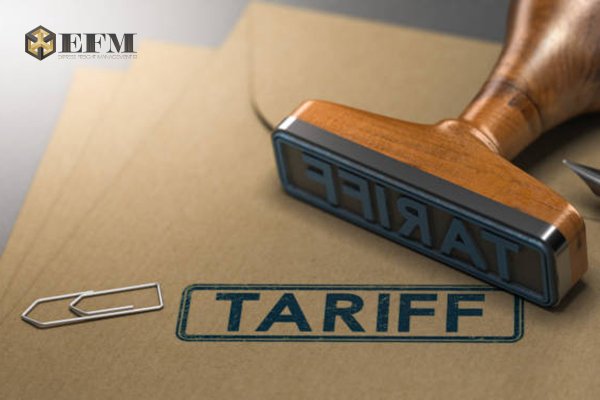Understanding Trump’s Reciprocal Tariff Plan

President Donald Trump has unveiled his “Liberation Day” reciprocal tariff plan to rectify what he views as a decades-long trade imbalance between the United States and other countries. Imposed via executive order, Trump’s tariffs charge countries approximately half of what they impose (on average) on United States goods, as per his administration’s calculations. The basic elements are as follows:
10% Baseline
A 10% import tariff baseline will be imposed on all countries, taking effect April 5, 2025. Some countries, like Singapore, which applies zero tariffs on US products so long as they qualify as originating goods under the United States-Singapore Free Trade Agreement’s rules of origin, will only face the base rate. Countries that will only face the base rate include:
- United Kingdom
- Brazil
- Singapore
- Chile
- Australia
- Turkey
- Colombia
- Peru
- Costa Rica
- Dominican Republic
- United Arab Emirates
- New Zealand
- Argentina
- Ecuador
- Guatemala
- Honduras
- Egypt
- Saudi Arabia
- El Salvador
- Trinidad and Tobago
Reciprocal Tariffs

Set to take effect April 9, 2025, President Trump will impose an individualized reciprocal higher tariff on the countries with which the United States has the largest trade deficits. First on the list was China and the European Union, which was calculated to be charging the US a 67 and 37 percent tariff respectively. In response, Trump indicated that his administration will be imposing 34 and 20 percent tariff on Chinese and European goods accordingly. For Chinese imports, this comes on top of the 20 percent levy that he previously imposed on the country, bringing the total new levy to 54 per cent.
The harshest burden would fall on Asian economies, with the highest rate of 49 percent imposed on Cambodia. The list of reciprocal tariffs on Southeast Asian countries are as follows:
| Country | Tariffs Charged on the USA | Discounted Reciprocal Tariffs |
| Brunei | 47% | 24% |
| Cambodia | 97% | 49% |
| Indonesia | 64% | 32% |
| Laos | 95% | 48% |
| Malaysia | 47% | 24% |
| Myanmar (Burma) | 88% | 44% |
| Philippines | 34% | 17% |
| Singapore | 10% (incl. GST) | 10% |
| Thailand | 72% | 36% |
| Vietnam | 90% | 46% |
The White House’s official rapid response team has published the full list of countries on its social media channels.
These tariffs will remain in effect until such a time as President Trump determines that the threat posed by the trade deficit and underlying nonreciprocal treatment is satisfied, resolved, or mitigated. However, the executive order also grants Trump the authority to increase or decrease the tariffs in accordance to the response of the USA’s trading partners.
Other Tariffs
25% Tariffs on Auto Imports
President Trump announced that his administration will impose a 25% tariff on all foreign made automobiles, with this set to go into effect at midnight on April 3.
Ending De Minimis
Reuters reports that President Trump has also signed an order to close the de minimis trade loophole exploited by China and Hong Kong to ship low-value packages duty free into the United States. This is set to take effect on May 2.
Further Reading: How Trump Closing De Minimis Loophole affects Logistics and ASEAN
Business Impact

With President Trump’s new reciprocal tariff plan, businesses are facing a shifting trade landscape that requires immediate attention and strategic planning. These tariffs are aimed at countries with which the United States has significant trade deficits, meaning that specific countries—especially those in Asia and Europe—will see increased costs on imports to the U.S. The implementation of these tariffs, particularly the individualized rates for each country, will add complexity to supply chains and freight management.
For businesses that rely on international trade, understanding and navigating these reciprocal tariffs will be essential to maintaining efficient and cost-effective operations. With tariff rates varying widely across regions, including significant increases in Southeast Asia, it’s crucial to stay updated and align your shipping strategy to minimize delays and unforeseen expenses.
Freight Forwarding

As President Trump’s reciprocal tariff plan take into effect over early April, freight forwarders will become indispensable in helping businesses stay competitive and compliant. At Express Freight Management, we specialize in helping you understand the nuances of these new tariffs and adjust your logistics and shipping strategies accordingly.
Our experienced team is equipped to assist you with tariff management, customs clearance, and route optimization (e.g. sea freight, air freight, trucking, etc.), ensuring that your goods move efficiently across borders despite the shifting trade policies. As experts in navigating trade between Southeast Asia and the United States, we are well positioned to provide tailored solutions that help you minimize the financial impact and avoid costly delays.
Partner with us today to navigate these complex tariff regulations and keep your supply chain running smoothly. Contact us now to discuss how we can help you adapt to the evolving trade environment and ensure your business stays ahead of the competition.
Streamline your logistics with Express Freight Management – your trusted partner for seamless global shipping solutions. As a leading international freight forwarder based in the United States, we have successfully managed trades between the United States and Brunei, Cambodia, Indonesia, Laos, Malaysia, Myanmar, Philippines, Singapore, Thailand, and Vietnam for nearly two decades. With expert knowledge, advanced technology, and a commitment to reliability, we provide seamless logistics management that helps you focus on what matters most—growing your business.

